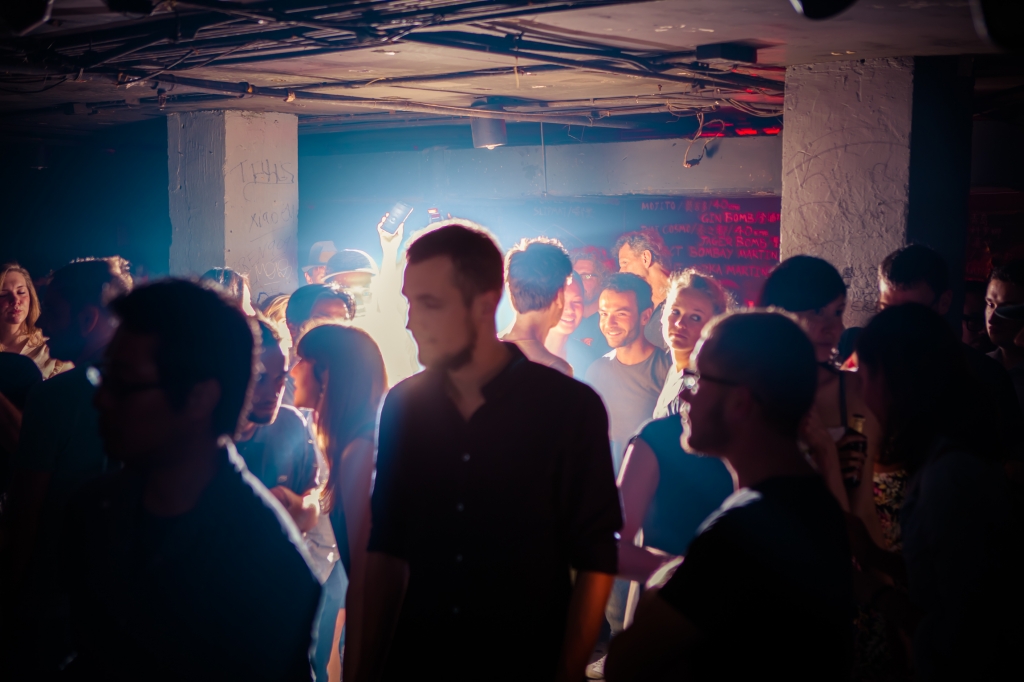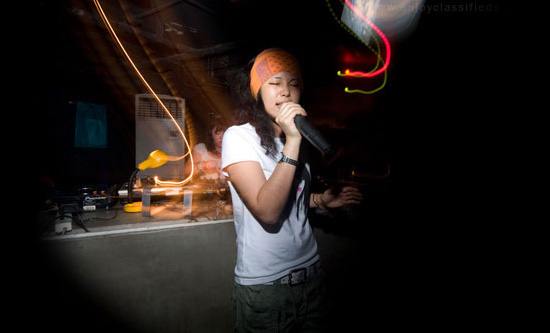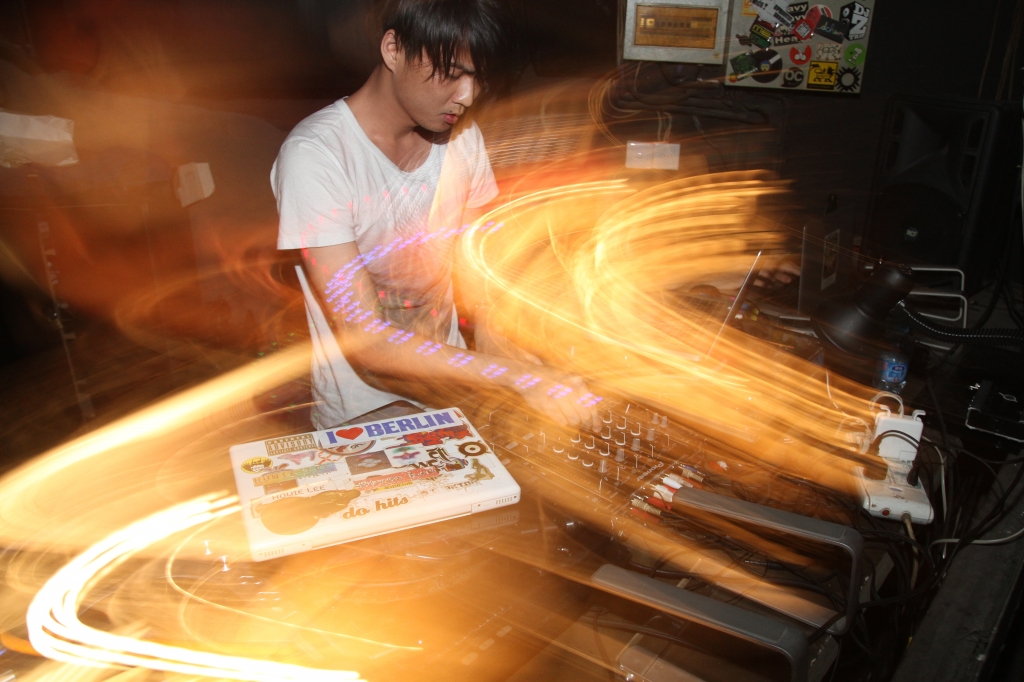The Shelter will shut its doors on 31 December, 2016.
Earlier this week, co-founder Gareth ‘Gaz’ Williams posted a terse note on the iconic Shanghai club’s Facebook group:
“We are closing down for a simple and boring reason: We couldn’t get our licensed renewed.
Just to be up front. That is what it is.”
What Shanghai had in “5, Yongfu Lu” was the foundation for something extraordinary.
Nightclubs, as we’re learning from the closure of London’s ‘Fabric’, offer evidence, frequently overlooked, of a city’s creative energy. Its ideas. Its restless urgency to create something new.
The Shelter was Shanghai’s crucible for extraordinary electronic music. An institution of its stature, forever a work-in-progress, takes decades to build.
But it can be undone in a single bureaucratic decision.
“That is what it is.“
In every single way, the Shelter was special. An “era defining” “cultural force”, to go by the reactions online to its demise. “A breeze blowing into the underground,” to use a phrase from Olivia Xiong (a.k.a Aivilox).
Let’s start with the structure itself.
Built on an actual Mao-era bomb shelter, the venue took over the space occupied in 2007 by the failing ‘Blue Ice’ bar.
“It got really trashy down there,” says Gaz on Blue Ice’s final, flailing days in an interview. At the time, he was part of a collective called ‘PAUSE’* that did weekly events at the place.
*(that’s Phreaktion, Antidote, Uprooted Sunshine, and :e:klek.tik, for old-school Shanghai scenesters)
They hit the reset button on Blue Ice. The space was reborn. At the time, an entire ecosystem of young promoters and collectives was bubbling up from the city – and The Shelter was at the right place at the right time.
“Shelter was base camp. Home for all the young crews starting out,” says Ma Haiping (MHP) of VOID, one of those promoters. “It helped us find our feet. It was the first club to really double-down on ‘alternative’ music, and it created the template for the future.”
“It was heaven,” says singer-songwriter ChaCha, who’d been performing then with Uprooted Sunshine everywhere from LoGo and Tanghui to Club BonBon. “Shelter was everything music lovers wanted here: good sound, cheap drinks, and owners who understood what we were trying to do.”
Shelter’s opening night was December 1, 2007, and the headliner (chosen by VOID) immediately declared its intentions. Techno producer Nomadico, from the “militantly anti-commercial” Underground Resistance crew.
“Welcome home,” it seemed to say to all the nomad clubheads in the city.
A night at The Shelter begins with a long, winding walk down a dark corridor. A mirrored ceiling descends into murk, and the pulsing bass builds in intensity as you approach the central hall, carved entirely out of stone.
There’s no fancy lighting, table service or unnecessary frills here. The music is always front-and-center. “In the dance floor, you can’t see anyone’s face,” says Shanghai DJ Illsee. “It’s only the sounds, and the excitement in your heart. I have lost myself in that vortex so many times.”
It’s loud, sweaty, hazy. Silhouettes shifting in the dark. Strong drinks.
The way it should be.
“Any DJ who walks down that tunnel for the first time knows it’s a place they’d love to play,” wrote Sam Which of similarly-minded Shanghai club Elevator. “In its first year, I remember walking down that corridor so many times, just repeating to myself – god, I want to play here,” says locally-based DJ Conrank.
“Shelter was the first place in Shanghai that made me feel: this is a music lover’s home. This is MY home,” says ChaCha.
“Getting to play at Shelter gave (and still gives me) a feeling I would do a disservice to articulate,” says Tim Zha a.k.a Organ Tapes.
Few clubs are more fittingly named. The Shelter, right from the beginning, was a safe space – a harbor for the city’s musical homeless. It gave fledgling promoters a place to call home for their ideas, and entertained a much wider spectrum of possibilities – taking artistic bets on grime, footwork, dubstep and future-bass where other clubs would hedge their commercial house/EDM bottom-line. The Shelter was a refuge. A refuge from Storm, if you will.
“The Shelter was hope. Hope of a new, sparkling musical sanctuary,” says Illsee.
Gaz’s inclusive booking policy saw staggering diversity in the kind of music that now passed through Shanghai. The local scene grew influential: TzuSing, Swimful, Faded Ghost (ChaCha), Downstate, Sig, Illsee, Goooose, and so many more. Big international names started noticing: Kode9, Shackleton, DJ Pinch, Adrian Sherwood, Goth Trad and many others playing down in the basement in the early years. “The venue’s diversity and inclusiveness was really special,” says local DJ and Daily Vinyl co-founder ollo-MAM.
To the young clubheads and DJs who turned up back then, it was life-changing.
“It was really something. I didn’t know electronic music could do that,” says Beijing-based producer Guzz, now part of the influential Do Hits collective. “I just used to play house music back then. What the Shelter made possible took my music in a darker, more industrial, more interesting direction.”
It was a scene-maker.
Genome6.66MBP, now one of the buzziest collectives in town, first met at The Shelter, where members Kilo Vee and Tess would discover Grime through the monthly ‘Push & Pull’ parties.
“As promoters, as a venue, Shelter helped us grow and try and get better,” says Kilo Vee. “It’s the purest place: 100% about the music.”
“The Shelter has turned down, time and time again, top promoters, instead letting me (a horrible promoter) have a night there,” says local producer and Stockholm Syndrome promoter Tzusing. “This lets less popular and more forward-thinking music get the exposure it deserves.”
It’s not a stretch to say that Shanghai has heard some of the most cutting-edge electronic music before cities like Berlin, New York and London. Not many Asian cities can claim this, beyond perhaps Tokyo. “Shelter showed Shanghai that a commercial venue can still embody your taste, values and ideals, and I feel this resonated with people on a deeper level than music,” says Tzusing.
It was an incubator.
“Shanghai was not a friendly place for promoters,” says ChaCha. “It was hard to deal with owners. They gave you shit deals, didn’t keep their word.”
The Shelter changed that. “This was the first venue to really help us out – we could get good deals that kept ticket prices low, and really expand the audience,” she says. “For us, it was a game changer. To actually be able to make money from shows, and use that to bring good musicians, book artists, do something special – The Shelter really made us try hard and create new experiences.”
And above all, it built a community. A lasting community.
“In 2015, I finally returned to The Shelter to play a VOID night, after a long medical absence,” says MHP. “To see so many old friends and supporters there, to feel that the community has survived…it really moved me. “
Like Fabric in London, The Shelter thrived by refusing to under-estimate its audience, and expanding the ‘possibility space’ of what a club could do.
In 2011, When ChaCha started AM444 with producer Jay.Soul, it was The Shelter that hosted their album launch, complete with live trumpet and backup singers. “It was a really special night that couldn’t have happened anywhere else,” she says.
In nine years, the Shelter has:
- Created a catwalk down the center of the dancefloor for a Mykki Blanco show
- Created interactive art installations, such as digital artist Kim Laughton’s work with 1500 suspended light sticks.
- Convinced Kode9 to play an hour long set of unreleased Burial tracks.
- Organized “lock-ins”, which involve closing the doors at 10pm, turning off the lights and mobile signal, and having guests play in pure darkness.
They’ve had RZA from the Wu Tang Clan randomly show up, as have (reportedly) The Beastie Boys. They once turned away the Backstreet Boys after they refused to pay an 80RMB cover charge.
Ask people what their favourite shows at The Shelter were, and be prepared for a dizzying number of competing answers.
Conrank: For me, it has to be The Bug in 2015 – unbelievable energy from front to back. One of the few times in my life that I’ve actually danced.
Bok Bok: It was with great surprise that I first came to Shanghai to find a place like Shelter. What I found on the other side of that dank tunnel entrance was a sanctuary for underground music around which a whole scene was growing. My first time playing there was an experience to remember: booth on the floor, huge intimate sound with proper subs, and maybe most importantly, what really left an impression was the attentive, appreciative audience of both locals and foreigners.
Dokedo: The Concrete & Grass Afterparty in 2016 by far. To see LOFI Maker and Joy Ginger play, then Ake Jiang and Visudy leading singalongs, all the girls holding Bohan Phoenix’s jeans and not letting go, then watching Ben UFO step up to play after Howie Lee…what a fucking crazy night.
ChaCha: The Subculture 4th anniversary party in 2011, with Shackleton. That was a ‘WOW’ night – when he played, it just turned my world upside down.
Tim Zha (Organ Tapes): That first time Shackleton played. That was the first time I really physically ‘felt’ music like that. Standing outside above ground I could still feel it rumbling.
Guzz: I’m filled with a constant regret that I don’t live in Shanghai to see more shows at The Shelter. My vote would go to the Japanese live hip-hop act Hifana. Shelter was totally packed, and their awesome finger-drum performance left a deep impression on me.
Illsee: The Stockholm Syndrome show with Das Ding and his ‘minimal wave’ dark electro. For someone like me with a serious 1980s fetish, it was really special.
Kilo Vee: I have experienced too many unforgettable performances here, shows that had me spellbound from the first seconds to the last flashes of light. But there’s a special place in my heart for Madlib . That night, for me, was the beginning of everything – it destroyed my world.
ollo-MAM: Peanut Butter Wolf. The mix of styles was incredible, and he’d prepared and synchronized some amazing visuals. It was inspiring, and The Shelter was probably the only place where I could have seen something this artistically bold.
MHP: Has to be The Horrorist. This was one of the most insane performances I have ever seen. Dude was dressed in S&M/goth gear, people were constantly jumping on the stage and roaring like crazy while he played 140bpm hardcore techno.
Aivilox: Visually and musically I want to highlight Subculture’s Dubble Dutch show. Thousands of blue fluorescence sticks were scattered around, and Dubble Dutch’s perfect performance created a mysterious atmosphere, and turned the Shelter into a place I’ve never been to. That was something special.
For nine years, The Shelter consistently skewed contrary to expectations.
When it was founded, in an era of superclubs and increasing EDM dominance, it chose the niche and underground.
Today, in an era of social media bloat, it’s a venue that evades photographic capture.
Mobile reception at The Shelter is inconsistent, often absent. The many, many Wechat videos that circulate during a Shelter show are often completely dark, with just the music pulsing.
Photos taken at The Shelter have a certain skewed quality to them. A “too-bright”ness, a jittery angularity. Almost as if it’s an intrusion to what’s going on inside. Photos and videos just don’t cut it.
Because of this, memories of The Shelter, paradoxically, are heightened – they exist as snapshots burnt in one’s mind, as muscle memory and badges of honour. As mythology.
ChaCha called it “home”. MHP calls it “base camp.” Dokedo calls it a “mecca”. Read the many odes to the venue online, and a pattern emerges. The imagery is always wistful, powerful, elemental. Religious.
“It’s a venue you believe in, learn from, and remain loyal to,” says Olivia.
“The Shelter is like a research station at the edge of a black hole,” says Illsee. “If you didn’t take refuge within, you were sucked in to the darkness.”
“If it didn’t exist,” she says. “We’d all have fallen in a long time ago.”
“The spirit of Shelter will live on,” says Dokedo when asked about the future. “What it has created is lasting, even if the space isn’t. “
“Places like Shelter are vital to our music scene(s) and worryingly they seem to be disappearing globally,” says Bok Bok. “From my visits to Shanghai so far I can tell there’s enough positive energy on the ground that I’m excited to see what happens next in the wake of Shelter’s closing, but the place was definitely special.”
The Shelter was a laboratory and a temple. In a city that needed both.
It’ll be desperately missed.




